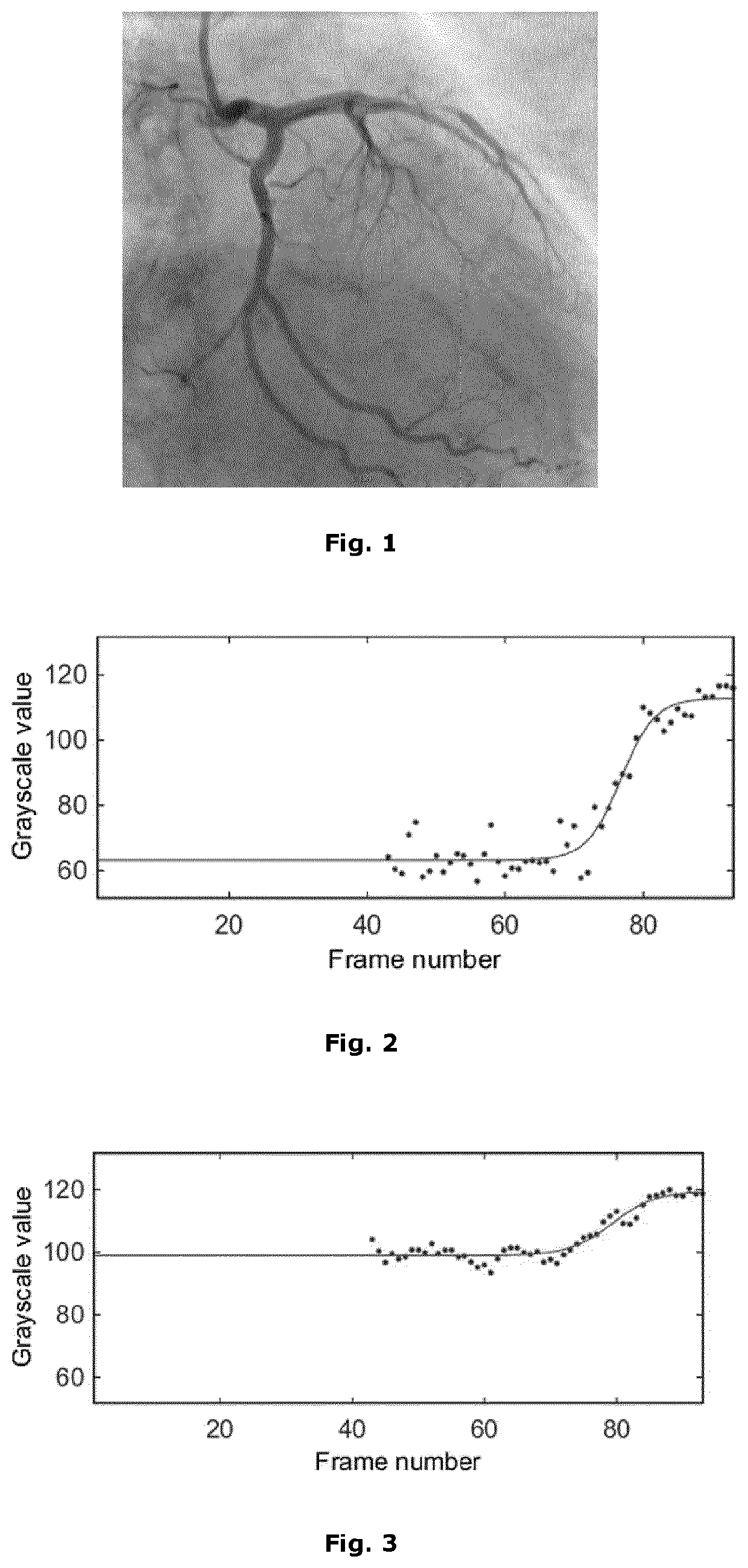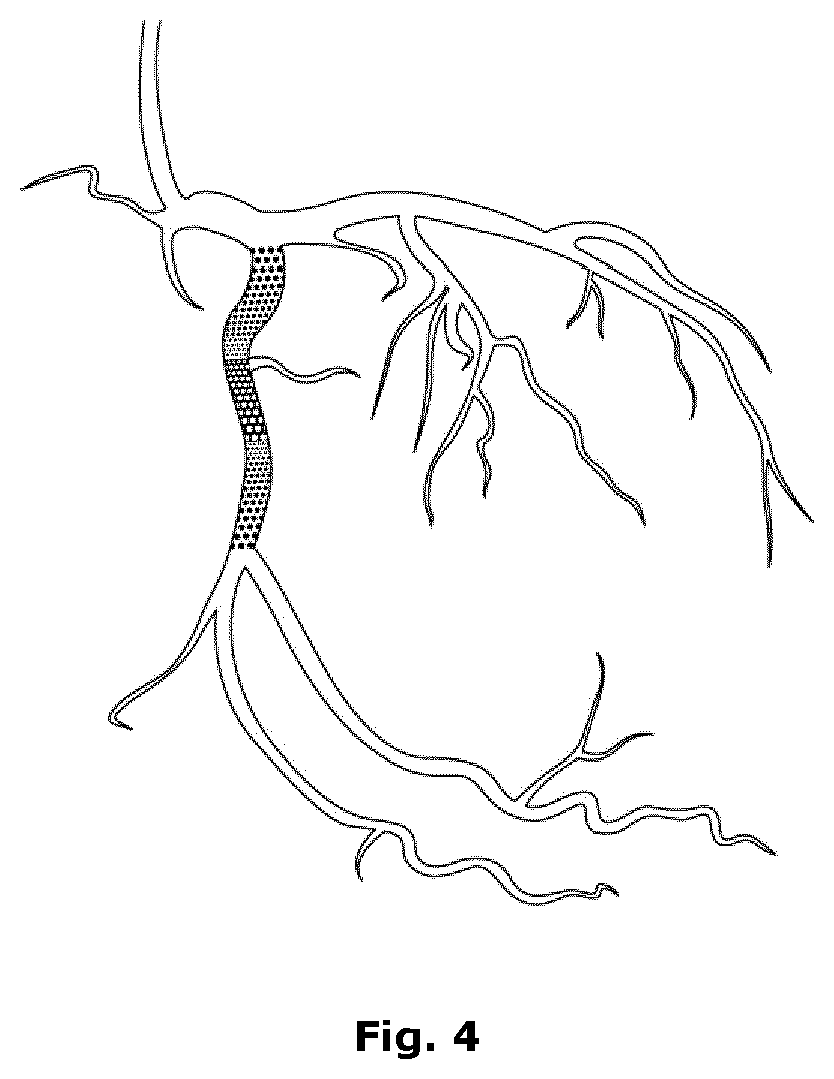Computer-implemented method for identifying zones of stasis and stenosis in blood vessels
a technology of stasis and stenosis, applied in the field of automatic identification of stasis and/or stenosis zones in blood vessel systems, can solve the problems of unproven benefits, insufficient prediction of heart attacks, invasive techniques that can provide more information, etc., and achieve the goal of obtaining the risk level of stasis in the zone more precisely, and improving the risk assessment effect of stasis
- Summary
- Abstract
- Description
- Claims
- Application Information
AI Technical Summary
Benefits of technology
Problems solved by technology
Method used
Image
Examples
example 1
[0059]In an embodiment, the present computer-implemented method for identifying a zone in a blood vessel system with a risk level for stasis comprises the following steps:
[0060]a) Data Sourcing:
[0061]An angiogram movie consisting of multiple frames (e.g., FIG. 1) is provided in a DICOM (Digital Imaging and Communications in Medicine) format, and is imported and converted to a file format usable for processing by MATLAB®.
[0062]b) Background Elimination:
[0063]In order to obtain the artery (=foreground) as it would appear without the background in the image, the background is subtracted from the original image. This involves estimating the background of each frame based on the maximal intensity value for each pixel in a time window around this frame. The highest intensity at each position is assumed to be the background intensity and is subtracted from the original image. Background suppression may result in a better artery segmentation (see below), due to the removal of background str...
example 2
[0086]In an embodiment, the present computer-implemented method is applied for the detection of stenosis, using the steps (a)-(c) of claim 1 and with the subsequent addition of steps comprising:
[0087]d1) Serving as inputs for the computer-implemented method, are:[0088]i. a blood vessel segment selected by the user[0089]ii. a segmentation mask
[0090]e1) For each point in the segment, the radius of the vessel is computed, as well as the stenosis percentage based on its neighbouring points
[0091]f1) Presentation of the results comprise a diagram whereby points above a certain stenosis percentage are indicated. For example, the stenosis percentage can be divided in the following classes: 95%. Optionally, the diagram can be accompanied with a warning should some points' percentages lie above a given percentage. These points will then also be indicated (e.g., using a specific colour) in one or more of the used angiogram images.
[0092]Overall, this method allows to better decide whether a tre...
PUM
 Login to View More
Login to View More Abstract
Description
Claims
Application Information
 Login to View More
Login to View More - R&D
- Intellectual Property
- Life Sciences
- Materials
- Tech Scout
- Unparalleled Data Quality
- Higher Quality Content
- 60% Fewer Hallucinations
Browse by: Latest US Patents, China's latest patents, Technical Efficacy Thesaurus, Application Domain, Technology Topic, Popular Technical Reports.
© 2025 PatSnap. All rights reserved.Legal|Privacy policy|Modern Slavery Act Transparency Statement|Sitemap|About US| Contact US: help@patsnap.com


